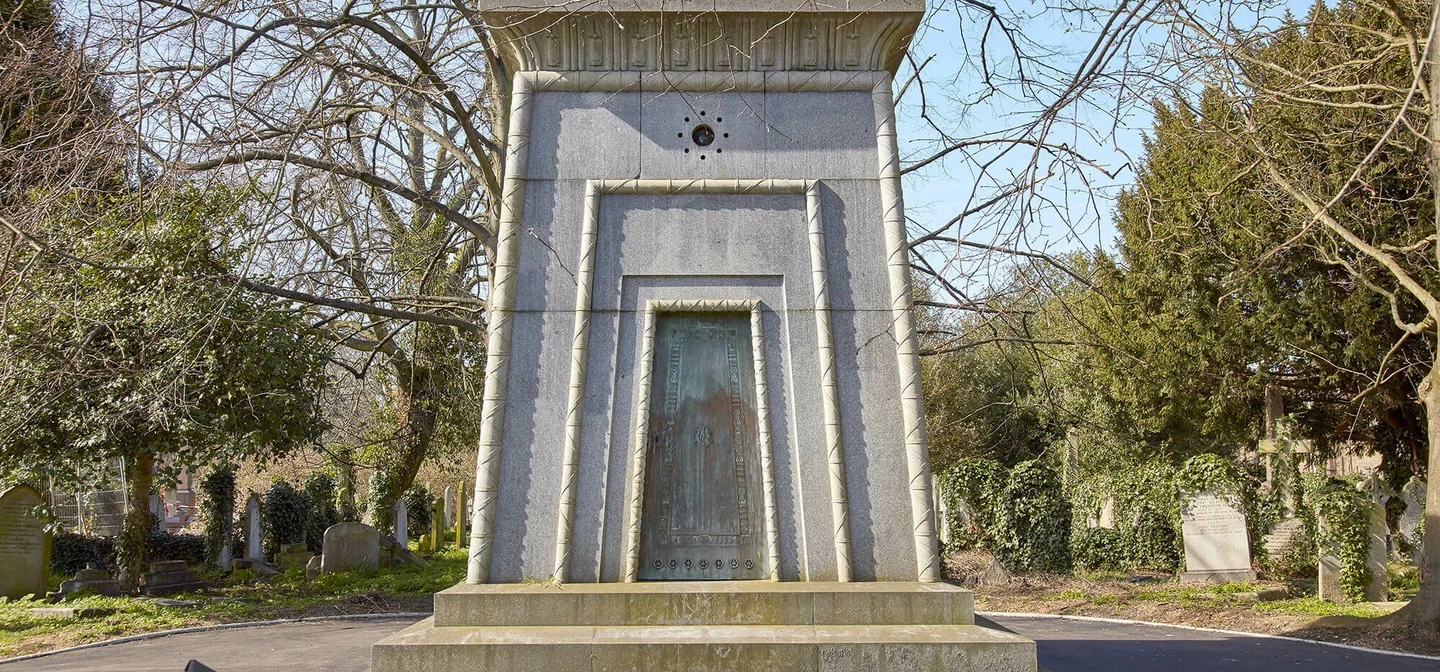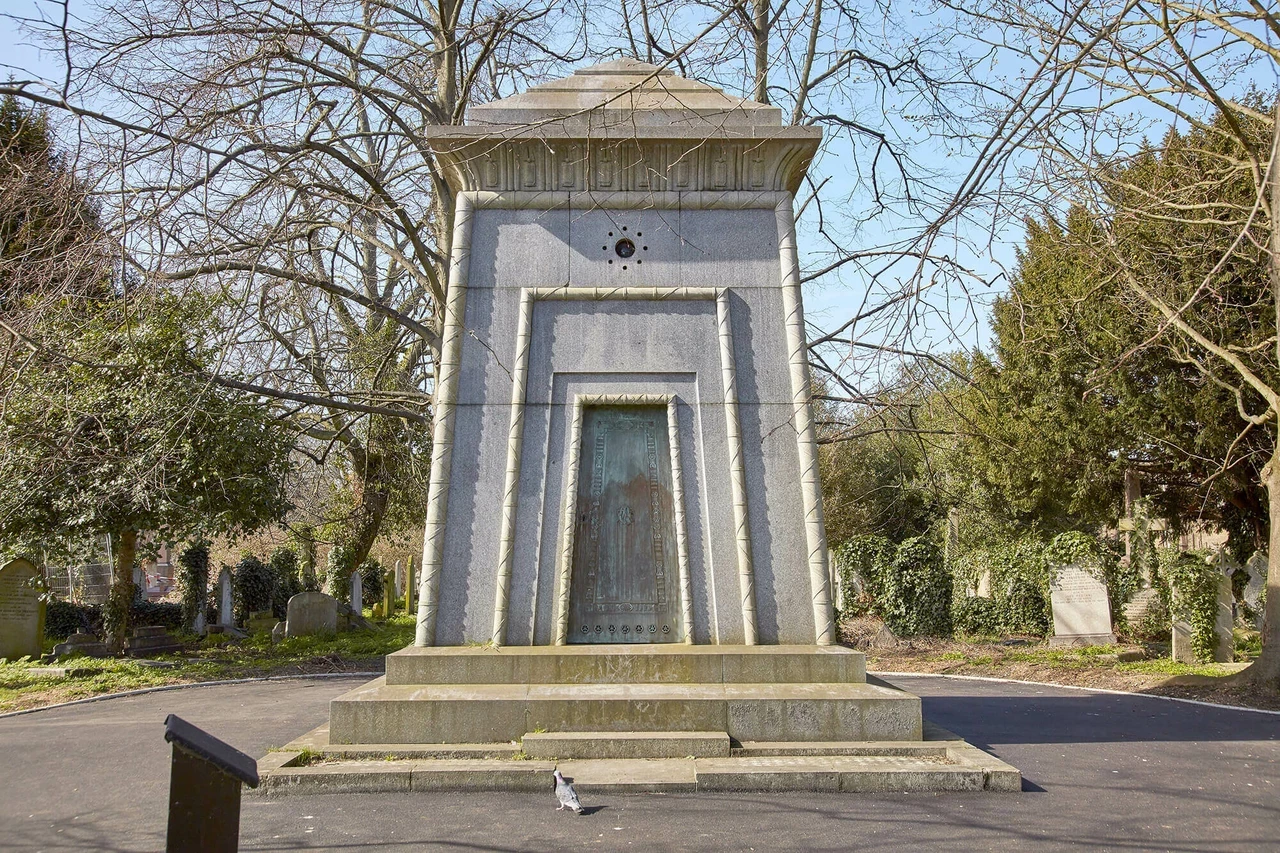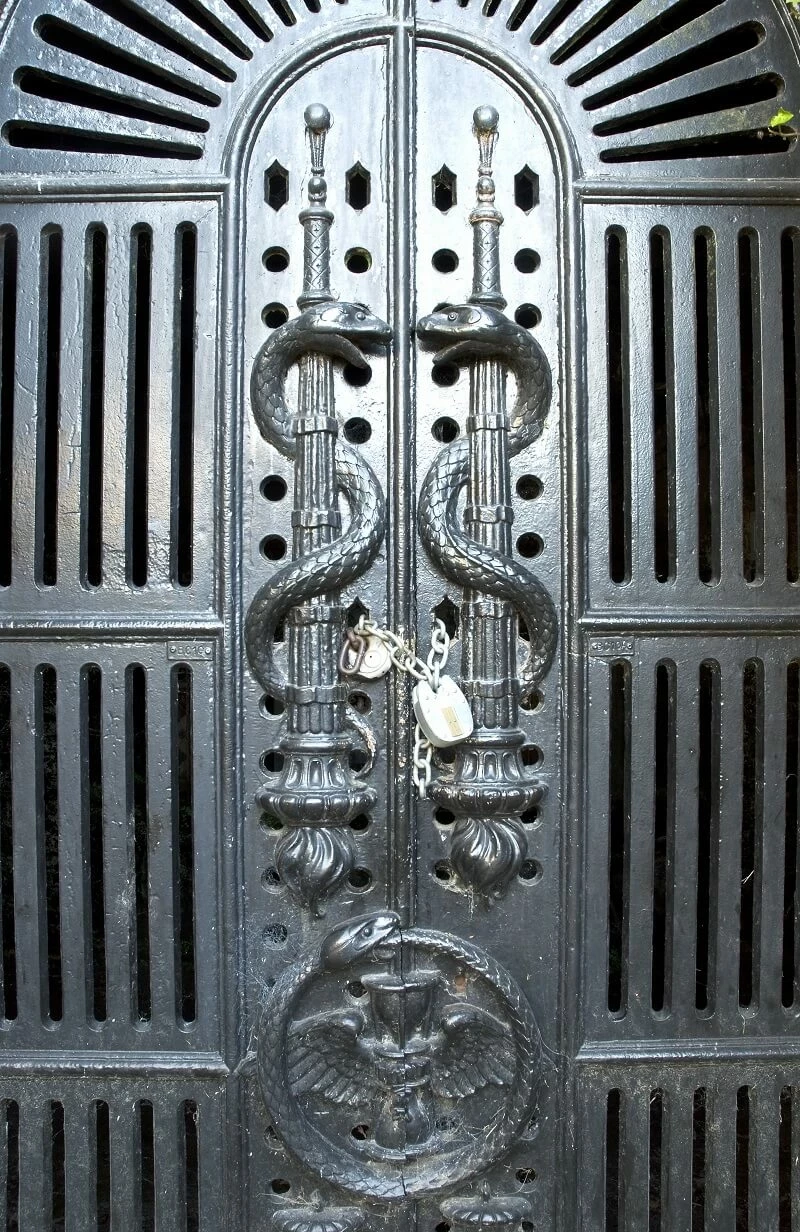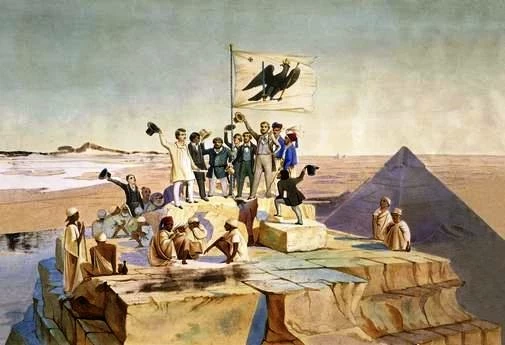
Hannah Courtoy (1781-1849)
A marvellous mausoleum that might be a time machine.
Monument
Hannah’s mausoleum is one of the most imposing in the cemetery, and her story is equally intriguing. She had three daughters with a much older man, a merchant called John Courtoy.
Although they were never married, Hannah controversially inherited John’s fortune when he died. She lived a lavish social life and now lies beneath a splendid memorial.

Signs & symbols
Hannah is buried with two of her daughters, while the third – Susannah Godson – is in another part of the cemetery. Little more is known about Hannah’s life or death, which has led to considerable speculation about her Egyptian-style tomb.
The Victorians were fascinated by the lives and deaths of the ancient Egyptians. It was fashionable to incorporate their signs and symbols onto graves and monuments.

Secrets of eternal life
Some believed the pharaohs knew secrets about eternal life and time travel. Others speculated that Egyptologists, studying the pyramids and tombs, might have discovered these secrets.
Could this have included the renowned Egyptologist, Joseph Bonomi, buried just a few metres from Hannah and who may have helped design her tomb?

Obelisks
People have suggested that Hannah’s mysterious mausoleum is a teleportation device or a time-travelling Tardis. Would you dare to step inside and find out?
The Egyptian obelisk was a symbol of the sun god Ra, representing light and life, but it has different meanings in other cultures.
